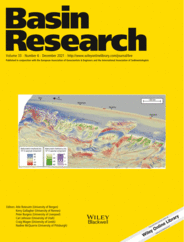
Full text loading...
 , Patricio Payrola2
, Patricio Payrola2 , Heiko Pingel3
, Heiko Pingel3 , Fernando Hongn2
, Fernando Hongn2 , Margarita Do Campo4, Edward R. Sobel3, Ayelen Lapiana1, John Cottle5
, Margarita Do Campo4, Edward R. Sobel3, Ayelen Lapiana1, John Cottle5 , Johannes Glodny6
, Johannes Glodny6 , Manfred R. Strecker3
, Manfred R. Strecker3
The Mio‐Pliocene fluvial systems in the Calchaquí region changed their location and geometry, associated with pro‐ and retrograding gravel wedges in response to intrabasin structural growth of ranges.
Foreland basins are sensitive recorders of spatiotemporal variations in tectonic and climatic forcing associated with an approaching orogenic front. Thus, analysis of foreland deposits and their associated deformation patterns and provenance signals allows assessment of tectonic and sedimentary processes during orogeny, providing clues to past environmental conditions. The Calchaquí region in the southern part of the northwest Argentinian Eastern Cordillera (ca. 25–26°S lat) structurally evolved from a contiguous Paleogene foreland of the Andes into a broken foreland and finally an intermontane basin landscape. This history is recorded in the sedimentary sequences of the Mio‐Pliocene Angastaco and Palo Pintado Formations. We combine sedimentological methods, U‐Pb zircon and K‐Ar glass geochronology, clay mineralogy, and geochemical weathering indices with apatite fission track and (U‐Th‐Sm)/He thermochronology, structural data, and fault modelling to document the stratigraphic response to the fluvial and tectonic processes that followed the formation of the broken foreland. Our observations suggest that fluvial systems in the Calchaquí region repeatedly changed their location and geometry. These fluvial systems were associated with pro‐ and retrograding gravel wedges that most likely formed in response to the structural growth of the Aguas de Castilla and Altos de Viñaco ranges that bound the basin to the east. A compartmentalisation of the foreland with restricted fluvial networks must have occurred by ca. 9 Ma. Our results demonstrate that the reconstruction of stratigraphic architectures constitutes a powerful means to better understand intrabasin tectonics and surface uplift in foreland basins.
]
Article metrics loading...

Full text loading...
References


Data & Media loading...

